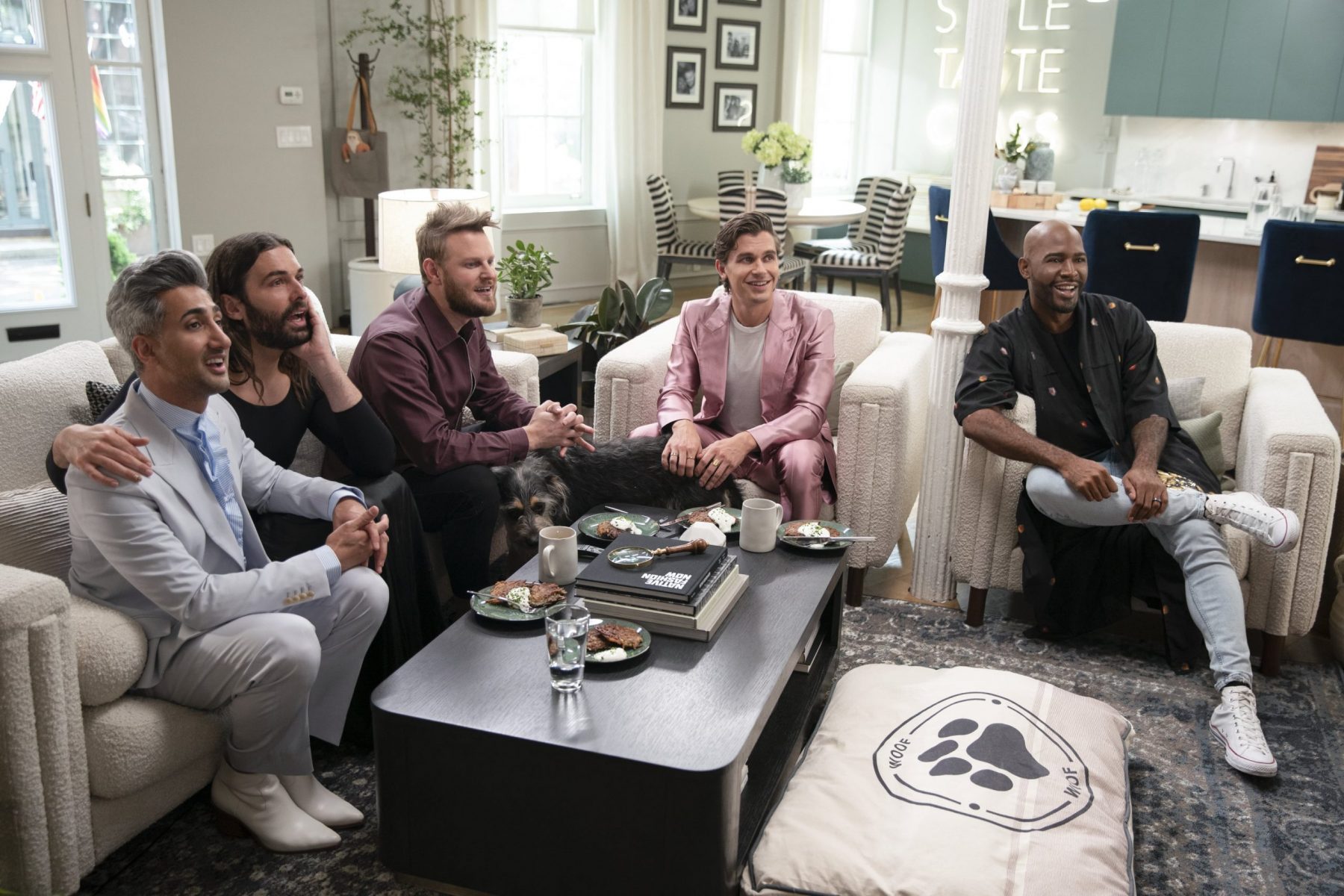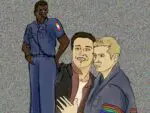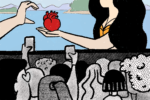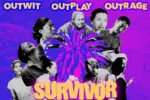Possibly the most scathing critique of Netflix’s “Queer Eye” that I’ve seen came from the undisputed home of scathing critiques: Twitter. The tweet in question came from Robby Soave. While responding to another tweet, he replied with the typical “expectation versus reality” format. It read, “Expectation: LGBTQ people will never thrive in a country powered by capitalism.” And for “Reality,” Soave posted a picture of the polished, smiling “Queer Eye” cast.
Twitter user @Edmerea was not content with this interpretation. Their updated version followed the same setup, but fixed the reality aspect: “Marginalized people only ever thrive in capitalism by commodifying themselves as caricatures and reinforcing stereotypes, thus pushing the rest of their communities further into obscurity.”
https://twitter.com/Edmerea/status/1205199365347794944
That’s a lot to unpack. But @Edmerea is not the first person to leverage criticism at “Queer Eye” for its queer representation — or lack thereof. In a thoughtful op-ed for The Spinoff, Sam Brooks explored his trepidations regarding the show, why he resisted watching it for so long and why it did not entirely sit well with him.
“The problem wasn’t with the show,” wrote Brooks. “The problem was with the culture. The problem was that because people had seen the show, because people had seen the contrived spectrum of queer maleness that it cultivated, they thought that they knew me.”
Brooks’ point is a solid one. Sure, “Queer Eye” includes something of a spectrum of queer maleness — Jonathan Van Ness, the grooming specialist, identifies as nonbinary, while fashion specialist Tan France and culture specialist Karamo Brown are both men of color — but the small sample size in no way does justice to the variety of queer experiences in the world, nor does the show give a nod to the fact that its portrayals are not all-encompassing.
And yes, the modern version of “Queer Eye” is certainly a step up from the initial “Queer Eye for the Straight Guy,” which aired on Bravo between 2003 and 2007 and featured a cast of five white, gay men who did makeovers exclusively for straight men. But surpassing the bar set by the original show, in this case, is no remarkable feat.
For Brooks and for me, it’s not necessarily that “Queer Eye” is bad representation; it portrays the personalities and skills of five queer people who dress extremely well, talk loudly and love to hug their acquaintances. The problem lies more in the fact that “Queer Eye” is one of very few mainstream depictions of queer people, and the personalities are not especially nuanced.
To be fair, “Queer Eye” seems to be improving with each season and has certainly made progress since @Edmerea’s 2019 tweet and Brooks’ 2019 article. In Season 5, which aired on Netflix in June 2020, viewers get a closer, more honest look at some of the characters’ personal lives.
Where some of the Fab Five’s explanations of their pasts waxed confessional in earlier seasons, they seem more at ease with their personalities and their stories in this season, and less inclined to center themselves in narratives that are supposed to be about the people they are helping.
For example, in Episode 1, “Preaching Out Loud,” design specialist Bobby Berk discusses his personal issues with the Christian church with the “hero” (the title that the Fab Five give to the person they are helping each week) Noah Hepler, a gay pastor. Berk and Hepler have some serious dialogue about what the church needs to do to become a more welcoming place for queer people and really seem to hear and support each other during the conversation.
Other episodes also feature memorable moments that feel real and deep. In Episode 7, “Silver Lining Sweeney,” Brown takes a walk with hero Jennifer Sweeney to discuss cherishing her remaining time with her husband, who is living with ALS. Where Season 1 Brown might have glossed over the pain and suffering that comes with losing a loved one in favor of a rousing reminder to take life one day at a time, Season 5 Brown finds a way to lean into the grief that Sweeney is feeling to help her reframe it.
In Episode 4, “The North Philadelphia Story,” food specialist Antoni Porowski teaches hero Tyreek Wanamaker how to make a crab boil, a dish that allows him to reconnect with his estranged adopted mother, Ruth. Though Wanamaker is the one doing the emotional work, Porowski really seems to get it right with the dish, which reminds Wanamaker of home and of his relationship with Ruth growing up, and thus allows him to revisit his past.
It is also worth noting that Season 5 hit Netflix at an especially distinct moment in time: With the Black Lives Matter movement gaining traction, Pride Month underway and the coronavirus pandemic continuing to ravage the United States, many viewers found themselves in an emotionally vulnerable position.
As I sat on my couch at home, far away from my college friends and other queer people who I know implicitly understand my experience as a queer woman, “Queer Eye” felt like exactly the kind of affirmation that I needed. Even with somewhat oversimplified narratives, “Queer Eye” was a much-needed reminder that queerness can accompany joy and comfort in one’s identity, regardless of the circumstances and the odds.
The episode that hit home for me was Episode 5, “The Anxious Activist,” probably because the similarities between me and the hero, Abby Leedy, are rampant. We are both young, white women with a passion for activism, and we both have a strong tendency to intertwine ourselves with activism and conviction to the point that we forget to make time and space for ourselves.
For Abby, it was the climate crisis; for me, it was the Black Lives Matter movement and the national response to the coronavirus. As a socioeconomically secure white woman, I have the privilege to not face these injustices head-on, but still, the headlines were increasingly overwhelming.
I think it was Van Ness’ reminder to Abby that I most needed to hear; essentially, you can’t be at your best as an activist, a friend, a supporter or a person if you aren’t taking care of yourself. It seems so simple, but hearing this piece of wisdom delivered with such compassion and sureness was especially meaningful. The moments where the Fab Five are not performing clichés but instead speaking from the heart and from experience are the ones that stick.
So, what’s the solution to the problem with “Queer Eye”?
Giving more space to the true personalities of the Fab Five and the heroes is a good place to start. But, as Brooks so astutely pointed out, the issue lies more with the overarching culture than with the show itself. Mainstream television is tragically deprived of nuanced queer characters across the spectrum of gender identity, sexuality and race.
For every stereotypically flamboyant gay character, the media needs an introverted lesbian love interest, a nonbinary babe, a trans person of color or a main character who is bisexual, asexual or pansexual. “Queer Eye” offers a sliver of representation, and it’s great. Why stop there?

















